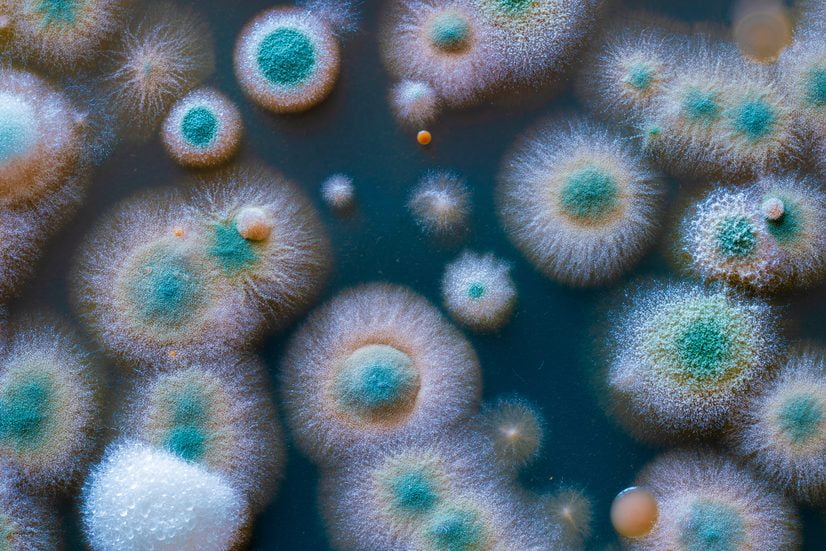Understanding Mold: A Detailed Guide
Mold is a common household problem that can cause significant health issues and structural damage if not addressed promptly. This Detailed guide will help you understanding mold, its causes, how to identify it, and what steps you can take to prevent and remove it.
What is Mold?
Mold is a type of fungus that thrives in damp, warm, and humid environments. It reproduces through tiny spores that float through the air. When these spores land on a moist surface, they begin to grow and spread, often creating a visible colony. Common types of household mold include Cladosporium, Penicillium, and Aspergillus.
Causes of Mold Growth
Mold needs three key elements to grow: moisture, a food source, and the right temperature. Common sources of moisture in homes include:
- Leaking roofs, windows, or pipes
- Flooding
- Damp basements or crawl spaces
- Poor ventilation in bathrooms and kitchens
- Condensation from HVAC systems
Organic materials like wood, drywall, and carpet provide an ideal food source for mold. Combined with warm temperatures, these conditions create a perfect environment for mold growth.
Identifying Mold in Your Home
Mold can appear in various colors, including black, green, white, and orange. It often has a musty odor. Common places to find mold include:
- Bathrooms, especially around the shower or bathtub
- Kitchens, particularly under sinks and around leaky appliances
- Basements and crawl spaces
- Attics, especially if there are roof leaks
- Walls and ceilings, especially if there are plumbing leaks
Health Risks Associated with Mold
Exposure to mold can cause a range of health issues, particularly for individuals with allergies, asthma, or compromised immune systems. Symptoms can include:
- Sneezing and coughing
- Itchy eyes and skin
- Nasal congestion
- Respiratory issues
Prolonged exposure to mold can lead to more severe health problems, such as chronic respiratory illnesses.
Understanding Mold: Navigating the Challenges of Indoor Mold
Mold, a pervasive issue often hidden from plain sight, becomes noticeable through its distinctive musty smell. Despite its covert nature, mold’s spores are constantly on the move, posing significant health risks to certain individuals.
In the outdoor environment, mold plays a vital role in decomposing organic matter, such as dead leaves and trees. Yet, when it finds its way indoors, it becomes a problem. The key to mold’s indoor proliferation is moisture, enabling it to thrive on any damp surface.
The United States Environmental Protection Agency highlights that mold propagates by releasing tiny, airborne spores, which are present both inside and outside. These spores require moist environments to begin growth. With a vast array of mold species, accurately identifying them is a task for skilled professionals.
Mold, a type of fungus, differs from plants as it grows under specific conditions: it seeks out moisture, warmth, and organic food sources. Dark, humid areas rich in organic materials offer perfect conditions for mold to flourish.
The cornerstone of mold control is effective moisture management. Experts emphasize the critical nature of addressing water damage promptly, ideally within the first 24-48 hours, to prevent mold from taking hold.
The health impacts of mold necessitate awareness, particularly for individuals with existing health issues, who are advised to consult healthcare professionals before embarking on mold remediation efforts.
While mold is an inevitable part of our environment, its indoor presence requires active intervention. By maintaining dry conditions, swiftly dealing with water damage, and seeking expert advice, homeowners can significantly reduce the hazards associated with indoor mold growth.
For those facing issues with water intrusion or mold, turning to NorthStar Restoration Services ensures expert handling of such challenges. In the realm of mold remediation, the expertise of professionals like NorthStar Restoration Services is invaluable. Remember, when it comes to mold, it’s always best to rely on the professionals!
Preventing Mold Growth
Prevention is key when it comes to mold. Here are some steps you can take to reduce the risk of mold in your home:
- Control Humidity Levels: Keep indoor humidity below 60%. Use dehumidifiers in damp areas like basements.
- Improve Ventilation: Use exhaust fans in bathrooms and kitchens to reduce moisture.
- Fix Leaks Promptly: Address any leaks in roofs, windows, or plumbing as soon as they occur.
- Dry Wet Areas Immediately: Clean and dry any wet areas within 24-48 hours to prevent mold growth.
- Use Mold-Resistant Products: When building or renovating, use mold-resistant drywall, paint, and insulation.
Removing Mold
If you discover mold in your home, it’s essential to remove it promptly. For small areas, you can usually handle the cleanup yourself:
- Wear protective gear, including gloves, a mask, and goggles.
- Use a mixture of water and detergent to scrub the mold off hard surfaces.
- For porous materials like drywall or carpet, you may need to remove and replace the affected area.
For extensive mold problems, it’s best to hire a professional mold remediation service. They have the expertise and equipment to safely and effectively remove mold and prevent future growth.


